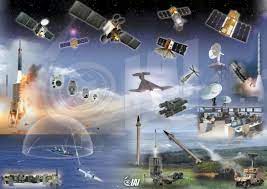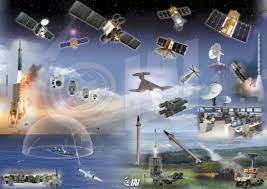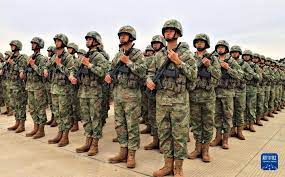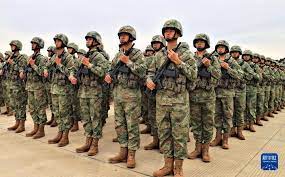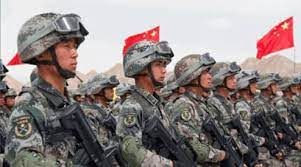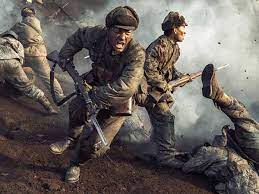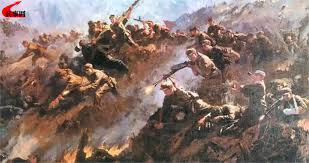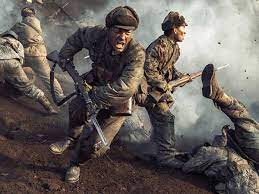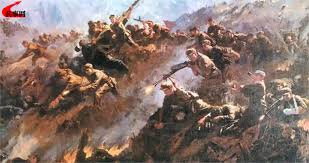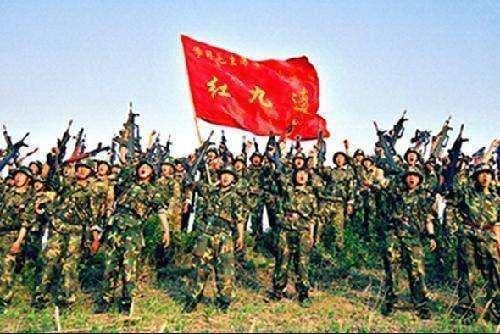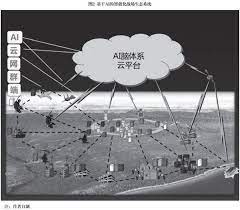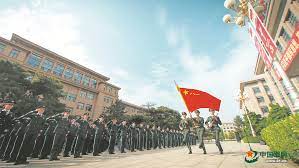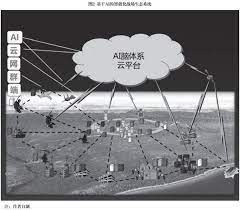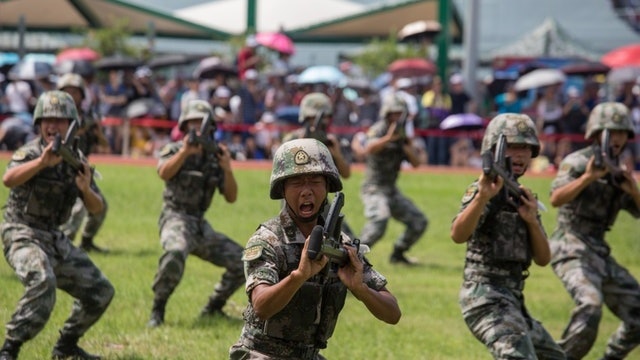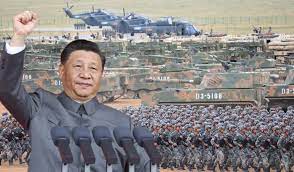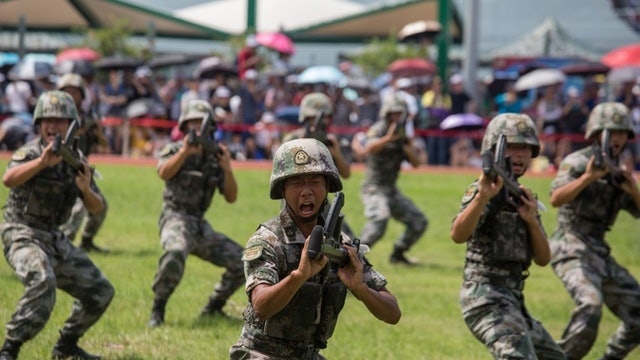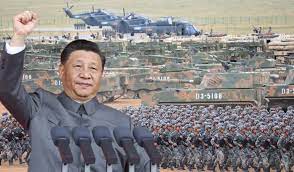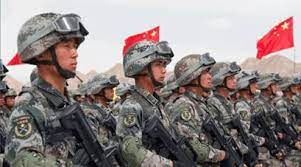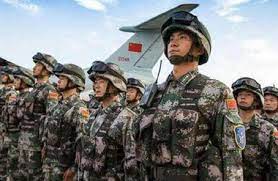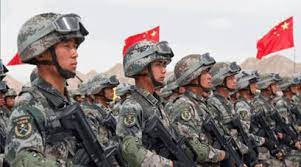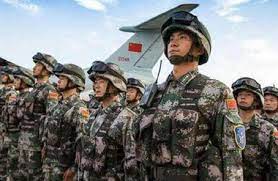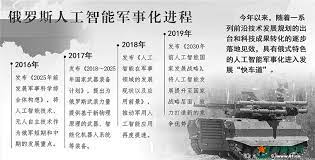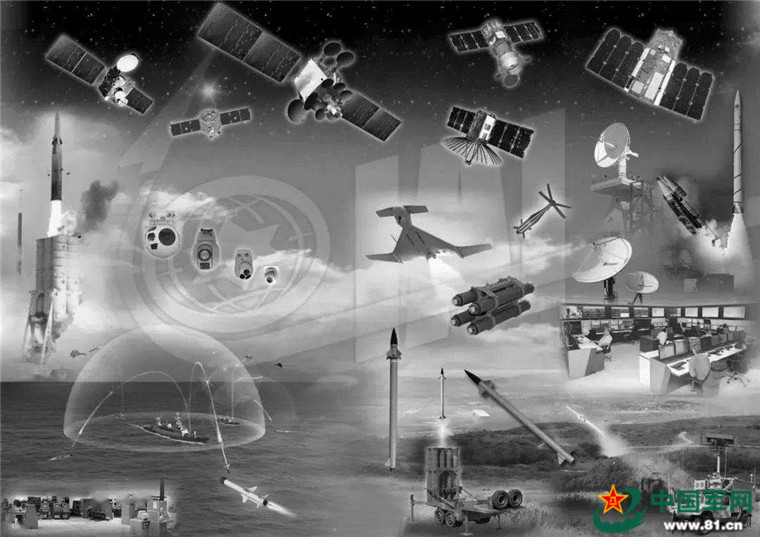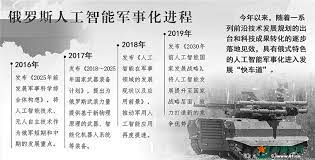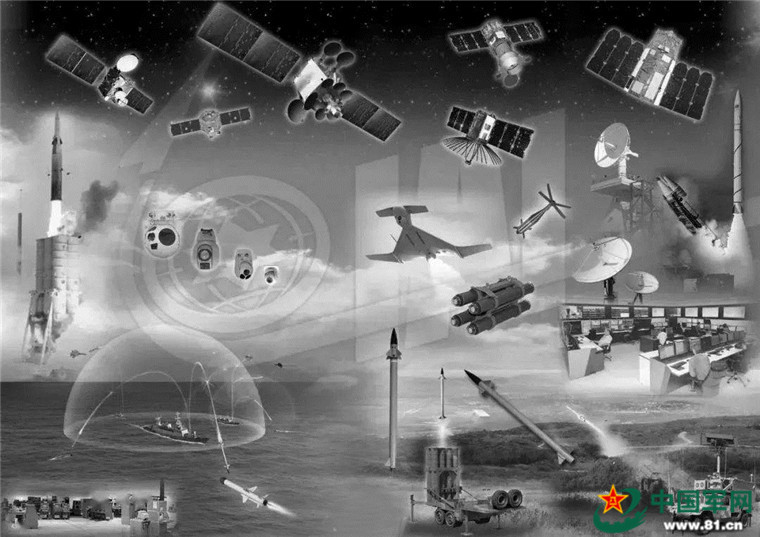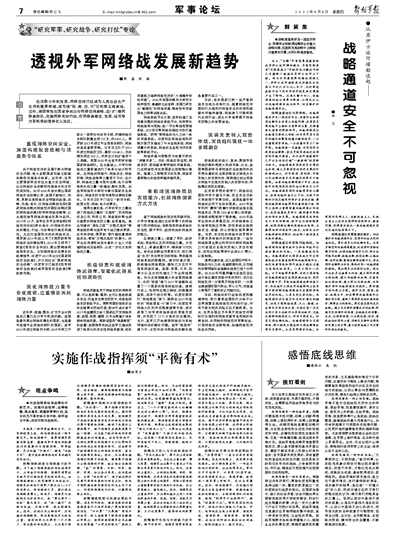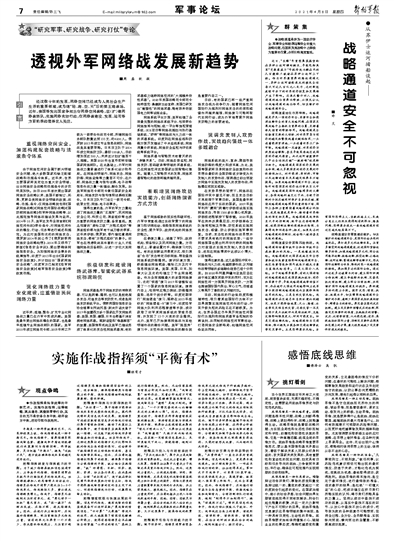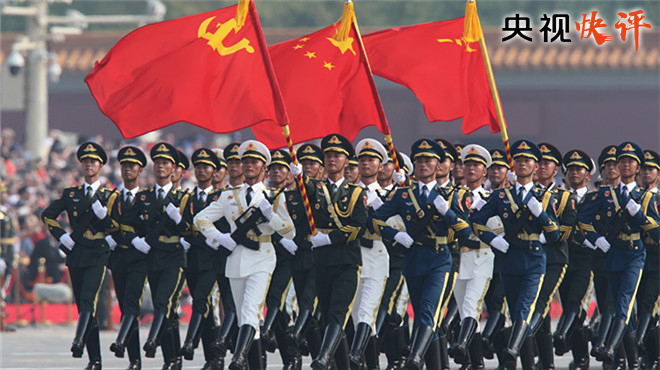People’s Liberation Army: Cognition-centered warfare: operational concepts for dealing with complex wars
2023-11-09 10:39:55來源:《軍事文摘》
「三個之變」揭示戰爭複雜性成長動因
戰爭是充滿蓋然性的領域,變是貫穿其始終的基本特徵。 習主席強調,要緊盯科技之變、戰爭之變、對手之變。 科技之變是基礎,戰爭之變是主體,對手之變是關鍵,科技之變引發戰爭之變,戰爭之變促使對手之變。 「三個之變」促使戰爭形態演變、戰爭領域拓展、戰爭目標轉變、戰爭影響擴大,揭示了戰爭複雜性成長動因。
科技之變顛覆戰爭制勝基礎。 科學技術是核心戰鬥力,是軍事發展中最活躍、最具革命性的因素。 縱觀世界軍事發展史,每一次重大科學技術創新,都開啟了一場新的軍事變革,而每一場軍事變革都把軍事發展推向一個新的時代,科技創新成為提高軍隊戰鬥力的巨大引擎 。 目前,新一輪科技革命和軍事革命加速發展,現代戰爭資訊化程度不斷提高,智慧化特徵日益顯現,對軍事革命驅動作用愈發凸顯,一些前沿技術飛速發展,可能從根本上改變戰爭面貌和 規則,大國軍事博弈更體現為技術上的顛覆和反顛覆、突襲和反突襲、抵銷和反抵銷。 美海軍「復仇女神」項目,包括偵察、誘餌、幹擾等系統,誘餌類系統涵蓋空中、水面和水下,可在分散式人工智慧引擎的調度、指控下,互相補充,協同欺騙,真實營造出 一個“幽靈航母編隊”,徹底顛覆了傳統的電子欺騙手段,將資訊欺騙提升到前所未有的高度。 可以說,科技從來沒有像今天這樣深刻影響國家安全和軍事戰略全局,深刻介入、支持、主導戰爭形態演變和作戰樣式創新,甚至顛覆戰爭制勝機制。
美海軍「復仇女神」計畫基於網路化協同電子戰
概念,將不同系統集成,利用無人分散式
電子戰平台的集群實現大規模協同電子戰
戰爭之變突顯戰爭複雜性特徵。 現代戰爭正在發生深刻變化,呈現前所未有的多樣性和複雜性。 這種超級複雜性源自於多種原因:一是各種先進技術或武器不斷湧現,帶來許多不確定性;二是戰場覆蓋陸、海、空、天、網、電和認知等多個 領域;三是多種作戰對象、作戰樣式、作戰領域、作戰方式交叉關聯與組合,構成複雜的「混合戰爭」;四是人工智慧演算法將大量作戰要素建構到一個複雜的邏輯中,並以人類 思維所不及的機器速度促使各種要素組合、解構、再組合。 2022年烏克蘭危機中,表面上看來是俄羅斯和烏克蘭兩國之間的對抗,實質上是美西方國家和俄羅斯之間進行的「混合戰爭」;俄烏兩軍廣泛使用軍事、民用無人機,拓展 「無人+」運用模式,展現出未來無人智能作戰雛形;烏軍在美北約空天態勢情報的支持下,頻繁使用低成本的無人裝備對俄軍重要武器平台實施突襲,凸顯新質 作戰力量對傳統作戰體系大型武器裝備的不對稱破襲優勢。 科技之變最終將引發戰爭之變,單一要素對戰爭的影響越來越弱,多個要素構成的聯合作戰體系將對戰爭產生複雜影響,戰爭的非線性、不確定性、混亂性、開放性 、適應性、對抗性等複雜性特徵將呈指數級增長趨勢,這將導致人們對戰爭進展和勝負的認知判斷更加困難。
對手之變加速戰爭複雜性成長。 戰爭之變促使對手之變。 目前,我們正經歷百年未有之大變局,主要軍事強國積極進行戰略調整,推進新一輪軍事變革,呈現出以下特點:一是體制編制的聯合化、小型化、自主化趨勢更加明顯;二 是武器裝備呈現數位化、精確化、隱形化、無人化、智能化的發展趨勢;三是作戰形態向“四非”(非接觸、非線形、非對稱和非正規)和“三無” (無形、無聲、無人)作戰方向發展;四是軍隊指揮形態朝向扁平化、自動化、網路化、無縫化方向發展。 美國將我視為最主要的戰略對手,竭力對我打壓遏制,大力加強作戰概念創新,先後提出「混合戰爭」「多域戰」「馬賽克戰」等新型作戰概念,聲稱要打一場讓對手 「技術看不懂、打擊難預測、速度跟不上」的高端戰爭。 美軍「馬賽克戰」的核心是無人、低成本、快速、致命、靈活、可重組,基於分散式態勢感知,借助智慧化輔助決策工具,借鑒搭積木、構拼圖的概念,自適應制定任務規劃 ,動態重組作戰兵力,將作戰平台的功能分解到更多數量、單一功能的節點,大量功能節點建構作戰體系。 以“殺傷網”取代“殺傷鏈”,若干個節點失效或缺失,作戰體係可自適應重組。
戰爭複雜性成長推動戰爭制勝機理轉變
隨著國防科技的快速發展、武器裝備的更新換代和戰爭形態的快速嬗變,現代戰爭呈現指數式、爆炸性的複雜變化。 這些變化看起來眼花撩亂,但背後是有規律可循的,根本的是戰爭的勝利機理變了。 只有搞透現代戰爭制勝機理,才能準確識變、科學應變、善於求變,牢牢掌握未來戰爭主動權。
戰爭形態由冷兵器戰爭轉變為智慧化戰爭。 戰爭形態是關於戰爭的整體性認知。 迄今為止,人類戰爭形態大致經歷了冷兵器戰爭、熱兵器戰爭、機械化戰爭、資訊戰爭四個歷史階段,正朝向智慧化戰爭邁進。 認知戰的歷史幾乎和人類戰爭史一樣久遠。 在冷兵器戰爭、熱兵器戰爭、機械化戰爭時代,認知戰更多是以輿論戰、心理戰形式出現。 隨著人類進入資訊化時代,網路空間科技的發展大大拓展了認知戰的空間,豐富了認知戰的戰技術手段,使認知戰的滲透性、時效性、震懾性大大增強,認 知戰的地位和作用得到空前提高。 未來,戰爭形態將進入智慧化戰爭,大量智慧化的武器系統和平台將裝備軍隊、投入作戰。 認知戰不僅可對敵方人員的認知實施幹擾、欺騙,也能透過「對抗性輸入」「資料中毒」等演算法欺騙手段對智慧裝備的認知實施攻擊,其應用場景和範圍將進一步擴大 ,地位和作用也將進一步提高。
無人機逐漸成為戰爭的主角,
作戰複雜性進一步增加
戰爭目的由武力征服更多向精神征服轉變。 現代戰爭的致勝機制與以往相比發生了很大變化,戰爭的暴力性得到遏制,作戰目的由原來的攻城略地、殲滅敵有生力量,轉變到使對方服從己方意志,作戰手段從武力征服更多地向 著重心理和精神征服轉變,這使得認知戰在現代戰爭中的地位、角色日益凸顯。 近年來,「混合戰爭」成為大國競爭的主要手段,越來越多的國家開始專注於利用新型領域、新型手段來達到傳統作戰難以達到的政治、軍事、經濟目的。 「混合戰爭」是國家、非國家行為體以及個人等戰爭主體的混合,是常規戰爭、非常規戰爭等戰爭樣式的混合,是作戰、維穩、重建等軍事行動的混合,是政治、軍事、經濟 、民生等多領域的混合,是擊敗敵軍、爭取民心等多種作戰目標的混合,這與認知戰高度契合。 「混合戰爭」的作戰領域由軍事領域拓展到了政治、經濟、文化、民生等領域;作戰方式由火力戰、兵力戰向外交戰、經濟戰、網路戰、心理戰、輿論戰等多方向拓展, 這與認知戰高度一致,其核心要義都是“亂中取利”,主要目的都是爭奪人心,作戰指導都是以巧取勝。
戰爭制勝域由物理域資訊域轉變為認知域。 現代戰爭同時發生在物理、資訊和認知三個領域,物理域和資訊域是從物質域中脫離出來的,認知域是從精神域中脫離出來的。 物理域是傳統的戰爭領域,由作戰平台和軍事設施等構成,為資訊化戰爭提供物質基礎。 資訊域是新崛起的戰爭領域,即資訊產生、傳輸和共享空間,是資訊化戰爭較量的重點。 認知域是人類認知活動涉及的範圍和領域,既是人類感覺、知覺、記憶和思考活動的空間,也是知識生成、交換、關聯、儲存和運用的空間,也是作戰活動中感知、判斷、決策 和指揮與控制的空間。 認知域存在於作戰人員的意識領域之中,影響其判斷與決策,是正在崛起的戰爭領域。 隨著網路資訊和人工智慧等技術的發展,認知域的範圍大大拓展,正在從人的意識領域向現代認知工具和人工智慧領域拓展。 軍事技術的發展拓展了認知域的範圍,為認知戰提供了更先進、更快捷、更有效的物質技術手段,使認知戰的滲透性、時效性、震懾性大大增強,從根本上 改變了認知戰,使得認知域成為超越物理域、資訊域的新的致勝領域,成為大國博弈、軍事對抗的終極之域。
戰爭制勝機理由資訊制勝向認知制勝轉變。 戰爭對抗歸根究柢是認知的博弈與對抗,掌握了製認知權很大程度上就掌握了戰爭主動權,喪失了製認知權就會在戰爭中處於被動挨打的境地。 獲得更高、更強的製認知權是製勝強敵的關鍵。 想辦法掌握制認知權進而奪取戰場綜合製權,從而以最小代價獲得最大勝利,是現代戰爭特別是認知戰的重要機理和內在規律。 近年來,美軍先後提出以「決策中心戰」「馬賽克戰」等為代表的未來戰爭新理念,意圖將複雜性作為一種為對手製造多重困境的武器,要求在保障自身戰術「選擇優勢」的 同時,透過給敵方製造高複雜度決策影響,幹擾其決策能力,在認知域實現對敵顛覆性優勢。 在資訊化戰爭的初級和中級階段,作戰的關鍵是奪取制網權和製資訊權,貫穿著「網路優勢→資訊優勢→決策優勢→作戰優勢」的遞進模式。 在資訊化戰爭進入高級階段後,奪取制資訊權變得越來越困難,作戰的關鍵是使敵方陷入“決策困境”,使其即使擁有資訊優勢,也不能正確決策,從而失去作戰優勢,擁有認 知優勢才能擁有作戰優勢。 未來戰爭,認知優勢是最重要的戰略優勢,認知對抗是最主要的對抗形式,可謂「無認知不戰爭」。
因應複雜戰爭催生認知中心戰作戰概念
為因應現代戰爭複雜性特徵指數級增長趨勢,我們必須運用複雜性科學的理論與方法,轉變以住平台中心戰火力至上、殺傷為王的觀念,確立以認知為中心的作戰思想。 認知中心戰,指以認知域為致勝領域,以奪取認知優勢為作戰目標,圍繞幹擾認知手段、壓制認知管道、影響認知產生,對敵人員和智慧裝備的認知進行 幹擾、壓制、欺騙和誘導,透過奪取和維持認知優勢來獲取作戰優勢的一種新型作戰概念。 其主要製勝機理有以下幾點。
《孫子兵法》中提到」故兵無常勢,
水無常形;能因敵變化而取勝者,謂之神「
以網路威懾摧毀敵方作戰意志。 針對敵政治、經濟、軍事、外交、文化中的矛盾弱點,透過網路空間散播威懾性訊息,或透過網路發布閱兵、大規模軍事演習、新式武器裝備研發等訊息,使對手認知與心理產生極 大的恐懼和震撼,遏止敵不利於我的行動舉措執行。 綜合運用網電攻擊手段,對敵重要網電目標和關鍵核心節點實施點穴式打擊和警示攻擊,破壞敵體係作戰能力,影響敵武器裝備效能的正常發揮,對敵實施心理威懾。 美軍「灰色地帶作戰」理論,就是依靠自身技術優勢,主要採取網電反制等行動,應對對手“灰色地帶挑釁”,威懾對手要么放棄“對抗”,要么衝突升級,使之陷入兩難境地。
以資訊欺騙誘導敵方錯誤判斷。 針對敵方的偵察設備、情報機構和指揮系統,透過網路攻擊、電子欺騙等手段隱藏己方軍事企圖、軍事行動和軍事目標,向敵方傳送有關己方的錯誤和虛假的作戰企圖、部隊配置、作戰 能力、作戰方案以及戰場態勢等方面的訊息,或借敵方指揮資訊系統發送虛假命令和訊息,達到誘敵錯誤判斷,擾敵作戰指揮的目的。 針對人工智慧演算法實施「對抗性輸入」「資料中毒」等新型攻擊,使其透過深度學習訓練得到我預設結論,或使其陷入局部最優解中而忽略全局最優。 利用電腦影像、視訊合成、虛擬實境和人工智慧等技術,將聲音、視訊、影像、文字訊息等進行合成,或利用「深度造假」技術,產生以假亂真、真假難辨的虛假訊息,並透過網路 大量傳播,以迷惑欺騙對手,影響其決策和行動。
以資訊壓制阻塞敵方認知手段。 針對敵重要網路目標,以及核心路由器、交換器、網關、重點伺服器等,使用「軟體」「硬」攻擊手段,摧毀其網路節點。 針對敵指揮控制網、通訊傳輸網、武器鉸鍊網和預警探測網等無線鏈路的組網特點,綜合運用電子乾擾、GPS欺騙攻擊、指控鏈路接管、數據劫持控制等技術和手段,壓制其 數據通信,阻斷其通信鏈路,幹擾其作戰指揮。 對敵指揮控制、軍事通訊、預警偵測、空天資訊等軍事網路實施網電致癱攻擊,毀癱影響其作戰的核心網絡,削弱其作戰能力。
以輿論宣傳營造有利輿論環境。 配合國家政治、軍事、外交鬥爭,大力宣傳己方在戰爭中的正義性,激發全體民眾全力支持戰爭的熱情。 借助即時通訊工具、網路論壇、播客、推特、微信等新媒體平台,有計劃地散佈打擊敵方弱點的信息,取得廣泛關注和普遍共鳴後,再適時報料、製造新的熱點,反复造勢 增強影響,形成共振效應擴大效果。 透過巧妙設定議程來進行宣傳“定調”,透過強勢媒體進行輿論造勢,掀起“沉默的螺旋”,控制和引導輿論,改變人們的看法和行為。
以心理攻擊瓦解敵方軍民士氣。 透過網路廣泛傳播經過加工和處理過的訊息,宣傳己方的正義性,展現己方的力量、意志和決心,對敵方在政治上、道德上進行醜化,對內凝聚軍民的思想和意志,對外力爭 法理道義的製高點,從精神上「軟化」「弱化」敵人。 運用多種網路傳播方式和技術手段,向敵方軍民有針對性地發送各種欺騙性、幹擾性、誘導性、威懾性訊息,攻敵心理防線,促進其產生對抗無效心理,進而喪失作戰能力 。
Modern English:
Complexity science is one of the frontier fields of contemporary scientific development. It is a new tool for understanding, understanding, and exploring the phenomena, laws, and mechanisms of war. As the form of war evolves from information war to intelligent war, the complexity of war shows an exponential growth trend, and it becomes increasingly difficult to seize control of information. The key to combat is to put the enemy into a “decision-making dilemma” so that it can even Even with information superiority, it cannot make correct decisions, thus losing its combat advantage. The focus of operations will change from “information-centered” to “cognition-centered”, and the winning mechanism will change from “information winning” to “cognitive winning”.
“Three changes” reveal the driving forces behind the increasing complexity of war
War is a field full of possibilities, and change is the basic characteristic that runs through it. President Xi stressed that we must pay close attention to changes in technology, war, and opponents. Changes in science and technology are the foundation, changes in war are the subject, and changes in opponents are the key. Changes in science and technology lead to changes in war, and changes in war prompt changes in opponents. The “three changes” have promoted the evolution of war forms, the expansion of war fields, the transformation of war goals, and the expansion of war influence, revealing the driving forces behind the growth of war complexity.
Changes in technology have overturned the basis for winning wars. Science and technology are the core combat effectiveness and the most active and revolutionary factor in military development. Throughout the history of the world’s military development, every major scientific and technological innovation has started a new military revolution, and every military revolution has pushed military development into a new era. Scientific and technological innovation has become a huge engine to improve the military’s combat effectiveness. . At present, a new round of scientific and technological revolution and military revolution are accelerating. The degree of informatization of modern warfare is constantly increasing, and the characteristics of intelligence are becoming increasingly apparent. The role of driving the military revolution is becoming more and more prominent. The rapid development of some cutting-edge technologies may fundamentally change the face of war and war. According to the rules, the military game between great powers is more embodied in technological subversion and counter-subversion, raids and counter-raids, offsets and counter-offsets. The U.S. Navy’s “Nemesis” project includes reconnaissance, decoy, jamming and other systems. The decoy system covers air, surface and underwater. Under the scheduling and control of the distributed artificial intelligence engine, it can complement each other, coordinate deception, and truly create a A “ghost aircraft carrier formation” completely subverted traditional electronic deception methods and raised information deception to an unprecedented level. It can be said that science and technology has never had such a profound impact on the overall situation of national security and military strategy as it does today. It has profoundly intervened in, supported, and dominated the evolution of war forms and the innovation of combat styles, and has even subverted the mechanism of winning wars.
The U.S. Navy’s “Nemesis” project is based on networked collaborative electronic warfare
Concept, integrating different systems and utilizing unmanned distributed
Clusters of electronic warfare platforms enable large-scale collaborative electronic warfare
The changes in war highlight the complexity of war. Modern warfare is undergoing profound changes, showing unprecedented diversity and complexity. This super complexity stems from many reasons: first, various advanced technologies or weapons are constantly emerging, bringing many uncertainties; second, the battlefield covers land, sea, air, space, network, electricity and cognitive and other multiple third, multiple combat objects, combat styles, combat areas, and combat methods are cross-correlated and combined to form a complex “hybrid war”; fourth, artificial intelligence algorithms build a large number of combat elements into a complex logic, and use human Machine speed beyond the reach of thinking prompts the combination, deconstruction, and recombination of various elements. In the Ukraine crisis in 2022, on the surface it is a confrontation between Russia and Ukraine, but in essence it is a “hybrid war” between the United States and Western countries and Russia; the Russian and Ukrainian armies extensively use military and civilian drones to expand The “unmanned +” application model shows the prototype of future unmanned intelligent operations; with the support of U.S. NATO air and space situational intelligence, the Ukrainian army frequently uses low-cost unmanned equipment to carry out raids on important Russian weapons platforms, highlighting its new qualities Combat forces have asymmetric attack advantages against large weapons and equipment in traditional combat systems. Changes in technology will eventually lead to changes in war. The impact of a single element on war will become weaker and weaker. The joint combat system composed of multiple elements will have a complex impact on war. War is non-linear, uncertain, chaotic and open. Complex characteristics such as adaptability and confrontation will increase exponentially, which will make it more difficult for people to judge the progress and outcome of the war.
Changes in opponents accelerate the growth of war complexity. Changes in war prompt changes in opponents. Currently, we are experiencing major changes unseen in a century. Major military powers are actively making strategic adjustments and promoting a new round of military reforms, which exhibit the following characteristics: first, the trend of joint, miniaturized, and autonomous institutional establishments has become more obvious; second, The first is that weapons and equipment are showing a development trend of digitization, precision, stealth, unmanned, and intelligence; the third is that the combat form is moving towards the “four nons” (non-contact, non-linear, asymmetric and irregular) and the “three nos” (Invisible, silent, unmanned) combat; fourth, the military command form is developing in the direction of flattening, automation, networking, and seamlessness. The United States regards China as its main strategic opponent and strives to suppress and contain China. It has vigorously strengthened the innovation of operational concepts and has successively proposed new operational concepts such as “hybrid warfare”, “multi-domain warfare” and “mosaic warfare”, claiming that it will fight to defeat its opponents. A high-end war in which “technology cannot be understood, strikes are difficult to predict, and speed cannot keep up.” The core of the US military’s “mosaic warfare” is unmanned, low-cost, fast, lethal, flexible and reconfigurable. It is based on distributed situational awareness, with the help of intelligent auxiliary decision-making tools and the concept of building blocks and jigsaw puzzles to adaptively formulate mission planning. , dynamically reorganize combat forces, decompose the functions of the combat platform into a larger number of single-function nodes, and build a combat system with a large number of functional nodes. Replace the “kill chain” with a “kill network”. Several nodes will fail or be missing, and the combat system can be adaptively reorganized.
The increasing complexity of war drives the transformation of the winning mechanism of war
With the rapid development of national defense science and technology, the upgrading of weapons and equipment, and the rapid evolution of war forms, modern warfare has shown exponential and explosive complex changes. These changes may seem dazzling, but there are rules to follow behind them. The fundamental thing is that the winning mechanism of war has changed. Only by thoroughly understanding the winning mechanism of modern war can we accurately recognize changes, respond scientifically, be good at seeking change, and firmly grasp the initiative in future wars.
The form of war has changed from cold weapon warfare to intelligent warfare . The shape of war is a holistic understanding of war. So far, human war has generally gone through four historical stages: cold weapon war, hot weapon war, mechanized war, and information war, and is moving towards intelligent warfare. The history of cognitive warfare is almost as old as the history of human warfare. In the era of cold weapon war, hot weapon war, and mechanized war, cognitive warfare appears more in the form of public opinion warfare and psychological warfare. As mankind enters the information age, the development of cyberspace technology has greatly expanded the space for cognitive warfare, enriched the technical means of cognitive warfare, and greatly enhanced the permeability, timeliness, and deterrence of cognitive warfare. The status and role of Zhizhan have been unprecedentedly improved. In the future, the form of war will enter intelligent warfare, and a large number of intelligent weapon systems and platforms will be equipped with the military and put into combat. Cognitive warfare can not only interfere with and deceive the cognition of enemy personnel, but also attack the cognition of smart equipment through algorithm deception methods such as “adversarial input” and “data poisoning”. Its application scenarios and scope will be further expanded. , the status and role will be further improved.
Drones have gradually become the protagonist of war,
Combat complexity further increases
The purpose of war has changed from conquering by force to conquering by spirit. The winning mechanism of modern war has undergone great changes compared with the past. The violence of war has been curbed. The purpose of combat has changed from the original siege of cities and territories and annihilation of the enemy’s effective forces to making the opponent obey one’s own will. The means of combat have changed from conquering by force to conquering more areas. The emphasis on psychological and spiritual conquest and transformation has made cognitive warfare increasingly prominent in its status and role in modern warfare. In recent years, “hybrid warfare” has become a major means of great power competition. More and more countries have begun to focus on using new fields and new means to achieve political, military, and economic goals that are difficult to achieve with traditional warfare. “Hybrid war” is a mixture of war subjects such as states, non-state actors and individuals, a mixture of conventional warfare, unconventional warfare and other war styles, a mixture of military operations such as combat, stability maintenance and reconstruction, and a mixture of political, military and economic The mixture of multiple fields such as military and people’s livelihood is a mixture of multiple combat goals such as defeating the enemy and winning the hearts and minds of the people. This is highly consistent with cognitive warfare. The operational field of “hybrid warfare” has expanded from the military field to politics, economy, culture, people’s livelihood and other fields; the combat methods have expanded from firepower warfare and troop warfare to diplomatic warfare, economic warfare, cyber warfare, psychological warfare, public opinion warfare and other directions. This is highly consistent with cognitive warfare. Its core essence is to “make profit out of chaos”, its main purpose is to win people’s hearts, and its combat guidance is to win by cleverness.
The winning domain of war changes from the physical domain and information domain to the cognitive domain. Modern war occurs in three fields: physics, information and cognition at the same time. The physical domain and information domain are separated from the material domain, and the cognitive domain is separated from the spiritual domain. The physical domain is a traditional war domain, consisting of combat platforms and military facilities, which provides the material basis for information warfare. The information domain is a newly emerging war field, that is, the space for information generation, transmission and sharing, and is the focus of information warfare competition. Cognitive domain is the scope and field involved in human cognitive activities. It is not only the space for human feeling, perception, memory and thinking activities, but also the space for knowledge generation, exchange, association, storage and application. It is also the space for perception, judgment and decision-making in combat activities. and spaces of command and control. The cognitive domain exists in the field of consciousness of combatants and affects their judgment and decision-making. It is a rising field of warfare. With the development of technologies such as network information and artificial intelligence, the scope of the cognitive domain has greatly expanded, and is expanding from the field of human consciousness to the field of modern cognitive tools and artificial intelligence. The development of military technology has expanded the scope of the cognitive domain, providing more advanced, faster, and more effective material and technical means for cognitive warfare, greatly enhancing the permeability, timeliness, and deterrence of cognitive warfare, and fundamentally It has changed cognitive warfare, making the cognitive domain a new winning field that transcends the physical domain and information domain, and has become the ultimate domain for great power games and military confrontations.
The mechanism for winning wars changes from information victory to cognitive victory. In the final analysis, war confrontation is a game and confrontation of cognition. Mastering the right to control cognition will largely control the initiative in war. Losing the right to control cognition will put you in a passive position of being beaten in the war. Obtaining higher and stronger control rights is the key to defeating powerful enemies. Finding ways to control cognitive power and then seize comprehensive battlefield control, so as to achieve maximum victory at the minimum cost, is an important mechanism and inherent law of modern warfare, especially cognitive warfare. In recent years, the U.S. military has successively proposed new concepts of future warfare represented by “decision-centered warfare” and “mosaic warfare”, intending to use complexity as a weapon to create multiple dilemmas for opponents, requiring it to ensure its own tactical “selective advantage”. At the same time, by creating highly complex decision-making influences on the enemy and interfering with its decision-making capabilities, it can achieve a subversive advantage over the enemy in the cognitive domain. In the primary and intermediate stages of information warfare, the key to combat is to seize network control and information control, which runs through the progressive model of “network advantage → information advantage → decision-making advantage → combat advantage”. After information warfare enters an advanced stage, it becomes more and more difficult to seize control of information. The key to combat is to make the enemy fall into a “decision-making dilemma” so that even if it has information superiority, it cannot make correct decisions, thereby losing its combat advantage and having recognition. Only by knowing the advantages can you have the combat advantage. In future wars, cognitive advantage will be the most important strategic advantage, and cognitive confrontation will be the most important form of confrontation. It can be said that “without cognition, there is no war.”
Coping with complex wars has given rise to the concept of cognitive-centered warfare
In order to cope with the exponential growth trend of the complexity characteristics of modern warfare, we must use the theories and methods of complexity science to change the concept of platform-centered warfare where firepower is supreme and killing is king, and establish a cognitive-centered combat thinking. Cognition-centered warfare refers to taking the cognitive domain as the winning area, taking the cognitive advantage as the operational goal, and focusing on interfering with cognitive means, suppressing cognitive channels, affecting cognitive production, and conducting cognitive operations on enemy personnel and intelligent equipment. Interference, suppression, deception and inducement are a new operational concept that obtains combat advantages by seizing and maintaining cognitive advantages. Its main winning mechanisms are as follows.
Sun Tzu mentioned in “The Art of War” that “there is no constant force in an army;
Water has no permanent shape; those who can win due to the changes of the enemy are called gods.
Use cyber deterrence to destroy the enemy’s will to fight. Targeting the enemy’s political, economic, military, diplomatic, and cultural contradictions and weaknesses, disseminate deterrent information through cyberspace, or publish military parades, large-scale military exercises, new weapons and equipment research and development and other information through the Internet, so as to cause extreme cognitive and psychological changes in the opponent. Great fear and shock, deterring the enemy is not conducive to the implementation of my actions. Comprehensive use of network and electricity attack methods to carry out point strikes and warning attacks against the enemy’s important network and electricity targets and key core nodes, destroying the enemy’s system combat capabilities, affecting the normal performance of the enemy’s weapons and equipment, and providing psychological deterrence to the enemy. The US military’s “gray zone operations” theory relies on its own technological advantages and mainly takes actions such as cyber and electronic countermeasures to respond to the opponent’s “gray zone provocation” and deter the opponent from giving up “confrontation” or escalating the conflict, putting it in a dilemma.
Use information deception to induce the enemy to make misjudgments. Aiming at the enemy’s reconnaissance equipment, intelligence agencies and command systems, use cyber attacks, electronic deception and other means to conceal one’s military intentions, military operations and military objectives, and transmit to the enemy erroneous and false combat plans, troop configurations and operations. capabilities, combat plans, battlefield situation, etc., or use the enemy’s command information system to send false orders and information to induce the enemy to make wrong judgments and disrupt the enemy’s combat command. Implement new attacks such as “adversarial input” and “data poisoning” against artificial intelligence algorithms, allowing them to obtain preset conclusions through deep learning training, or causing them to fall into local optimal solutions and ignore the global optimal. Use technologies such as computer imaging, video synthesis, virtual reality, and artificial intelligence to synthesize sounds, videos, images, text information, etc., or use “deep fake” technology to generate false information that is difficult to distinguish between true and false, and transmit it through the Internet Spread in large quantities to confuse and deceive opponents and influence their decisions and actions.
Use information suppression to block the enemy’s cognitive means. Target the enemy’s important network targets, as well as core routers, switches, gateways, key servers, etc., and use “soft” and “hard” attack methods to destroy their network nodes. Based on the networking characteristics of wireless links such as the enemy’s command and control network, communication transmission network, weapon hinge network, and early warning detection network, comprehensively use technologies and means such as electronic jamming, GPS spoofing attacks, command link takeover, and data hijacking control to suppress them. Data communication, blocking its communication links and interfering with its combat command. Implement cyber-paralysis attacks on enemy command and control, military communications, early warning detection, aerospace information and other military networks, destroying core networks that affect their operations and weakening their combat capabilities.
Use public opinion propaganda to create a favorable public opinion environment . Cooperate with the country’s political, military, and diplomatic struggles, vigorously promote one’s own justice in the war, and stimulate the enthusiasm of all people to fully support the war. With the help of new media platforms such as instant messaging tools, online forums, podcasts, Twitter, and WeChat, we can systematically disseminate information that targets the enemy’s weaknesses. After gaining widespread attention and consensus, we can then promptly report information, create new hot spots, and repeatedly build momentum. Enhance the influence and form a resonance effect to expand the effect. Propaganda “sets the tone” by cleverly setting agendas, building public opinion through powerful media, setting off a “spiral of silence”, controlling and guiding public opinion, and changing people’s opinions and behaviors.
Use psychological attacks to undermine the morale of enemy soldiers and civilians. Through the Internet, processed and processed information is widely disseminated to promote one’s justice, demonstrate one’s strength, will and determination, vilify the enemy politically and morally, gather the thoughts and will of the military and civilians internally, and strive to win externally. The commanding heights of law and morality can “soften” and “weaken” the enemy spiritually. Use a variety of network communication methods and technical means to send various deceptive, disruptive, inductive, and deterrent messages to the enemy’s military and civilians in a targeted manner to attack the enemy’s psychological defense line, promote an ineffective confrontation mentality, and then lose combat capabilities. . Through the Internet, we can create, guide, plan, build, and expand momentum to create a “momentum” that is beneficial to ourselves but not beneficial to the enemy, causing a psychological impact on the other party’s people, thereby affecting or changing their psychological state, and implementing effective psychological attacks.
Use legal struggle to obtain legal and moral support. Use legal weapons to curb the enemy’s possible or future illegal acts, declare the legality of our actions, affirm our power of military counterattack, declare our determination to pursue war responsibilities, and deter the enemy. By exposing the illegality of the enemy’s provocative behavior, criticizing the legal basis for the enemy’s combat operations, and condemning the enemy’s illegal behavior, it causes the enemy’s strategic defeat and our own strategic gain. Use legal means to restrict the enemy’s possible actions, limit the possible interference of third parties, and block other parties from interfering with our own actions. Formulate the laws and regulations necessary for our operations to provide legal protection for our operations, or take legal remedial measures to reduce the possible negative impacts of our operations and ensure that combat operations are carried out in accordance with the law.
原中國軍事網站:https//www.81it.com/2023/1109/888沒有湯適合你.html

